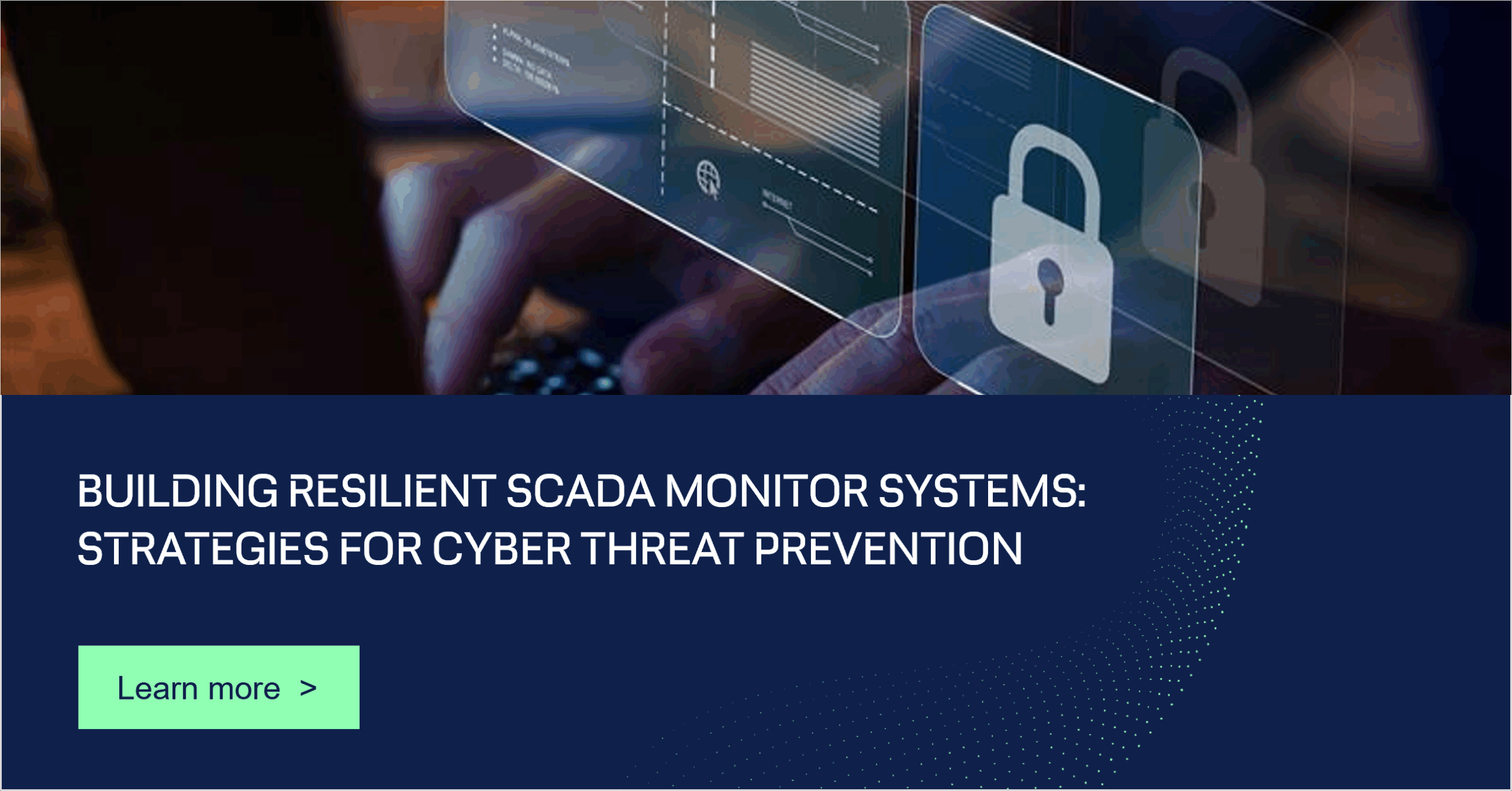According to the DNV ETO 2024, the expansion of distribution grid capacity depends heavily on regulations and policies that incentivize investment in digitalization, and enhanced cyber security. This includes, but is not limited to control centre systems, and systems capable of handling the automated activation of demand-response.
Supervisory Control and Data Acquisition (SCADA) systems play a key role in monitoring and controlling critical infrastructure such as power grids, water treatment, and manufacturing processes. At GreenPowerMonitor, a DNV company (GPM), we understand that securing these vital systems against cyber threats requires a layered approach – with network segmentation and patch management as foundational pillars. Read on to learn more about the role of network segmentation in SCADA security, patching in SCADA environments, and the impact of keeping systems up to date.
The critical role of network segmentation in SCADA security
SCADA environments are unique in that they integrate operational technology (OT) with information technology (IT), often creating complex networks that span business systems and control systems. This convergence, while beneficial for efficiency and data visibility, introduces cybersecurity risks. A flat or poorly segmented network can allow attackers who gain initial access to move laterally, potentially compromising critical control systems and causing operational disruptions.
Network segmentation addresses this risk by dividing a larger network into smaller, isolated subnetworks or zones, each with controlled access and tailored security policies. This division can be physical – using separate hardware and cabling – or logical, employing technologies such as Virtual LANs (VLANs) to create virtual boundaries within the same physical infrastructure.
The benefits of network segmentation for security
- Limits lateral movement: If an attacker breaches one segment, segmentation prevents or slows their ability to access other critical parts of the network.
- Improves traffic control: Segmentation allows better management and monitoring of network traffic, reducing congestion and enhancing performance.
- Enables tailored security: Different segments can have security controls appropriate to their risk level, optimizing resource allocation.
- Supports compliance: Many industrial cybersecurity standards, including ISA/IEC 62443, recommend or require segmentation to protect critical assets.
Mechanisms enabling network segmentation
- VLANs: VLANs logically separate network traffic by creating virtual subnetworks within a single physical network. This is cost-effective and flexible, allowing segmentation without additional hardware investments.
- Firewalls: Firewalls enforce security policies at the boundaries between network segments; filtering traffic based on rules to block unauthorized access and detect suspicious activity.
- Intrusion Detection Systems (IDS): IDS’ continuously monitor industrial network traffic and asset behavior in real time to detect cyber threats and operational anomalies. Using AI-powered behavioral analytics and signature-based detection, they identify known threats, zero-day attacks, unauthorized devices, misconfigurations, and suspicious activities without disrupting operations.
At GPM, we use these technologies to build robust segmentation architectures that safeguard SCADA monitor systems, ensuring that even if one segment is compromised, the overall system remains protected.
Why patching is essential in SCADA environments
While network segmentation is critical, it is only one part of a comprehensive renewable energy cybersecurity strategy. SCADA systems often include legacy components with outdated software that may harbor unpatched vulnerabilities. Attackers exploit these weaknesses to gain unauthorized access or disrupt operations.
Unlike traditional IT systems, SCADA monitor systems and Industrial Control Systems (ICS) operate continuously and are highly sensitive to downtime. Applying patches often requires careful planning to avoid operational interruptions, making patch management more complex.
Best practices for effective SCADA patch management
- Asset inventory and risk assessment: identify and classify all SCADA components based on their criticality and exposure to risk. This prioritizes patching efforts where they matter most.
- Structured patch management process: establish a formal process for timely patch deployment, including testing patches in controlled environments before production rollout to minimize disruptions.
- Progressive and segmented rollout: deploy patches gradually, updating one network segment at a time to monitor effects and quickly respond to issues without impacting the entire system.
- Virtual patching: when immediate patching is not feasible, use compensating controls such as IPS and enhanced network segmentation to mitigate risks temporarily.
- Compliance with standards: follow guidelines like ISA/IEC 62443-2-3 to align patch management with industry best practices and regulatory requirements.
The impact of keeping systems up to date
Regular patching reduces the attack surface by closing known vulnerabilities, thereby preventing exploitation by malware or hackers. It also strengthens authentication mechanisms and communication protocols, which are often weak points in legacy SCADA systems.
At GPM, we emphasize proactive patch management combined with continuous monitoring to maintain the integrity and availability of SCADA systems, balancing security needs with operational continuity. Find out more about GPM SCADA.
At GreenPowerMonitor, a DNV company, we know that protecting SCADA systems is about more than just technology-it’s about building resilient, layered defenses that keep critical infrastructure safe and operational. Network segmentation using VLANs and firewalls creates strong boundaries that limit attackers’ ability to move inside your network. Complementing this, our deployment of Nozomi Networks’ IDS gives real-time visibility and anomaly detection tailored specifically for industrial environments, helping to spot threats before they escalate.
However, segmentation and detection are only part of the story. Staying ahead means keeping all systems patched and up-to-date, closing vulnerabilities before attackers can exploit them. In SCADA environments, where uptime is paramount, this requires careful planning and a proactive mindset.
By combining smart segmentation, advanced IDS monitoring, and disciplined patch management, GPM empowers organizations to defend their SCADA networks effectively-because when critical infrastructure runs smoothly, businesses thrive.
At GPM all of our solutions include ample provisioning in terms of network security, as well as GPM SCADA, this includes network security for GPM PPC, GPM EMS, GPM HEMS, and GPM Horizon.
Do you want to meet us and talk to our renewable energy experts?
For more information on how GPM SCADA balances security needs with operational continuity for your plant fill in the form to request a meeting with our renewable energy experts who will be available to answer questions, provide demonstrations, and offer insights on best practices.

